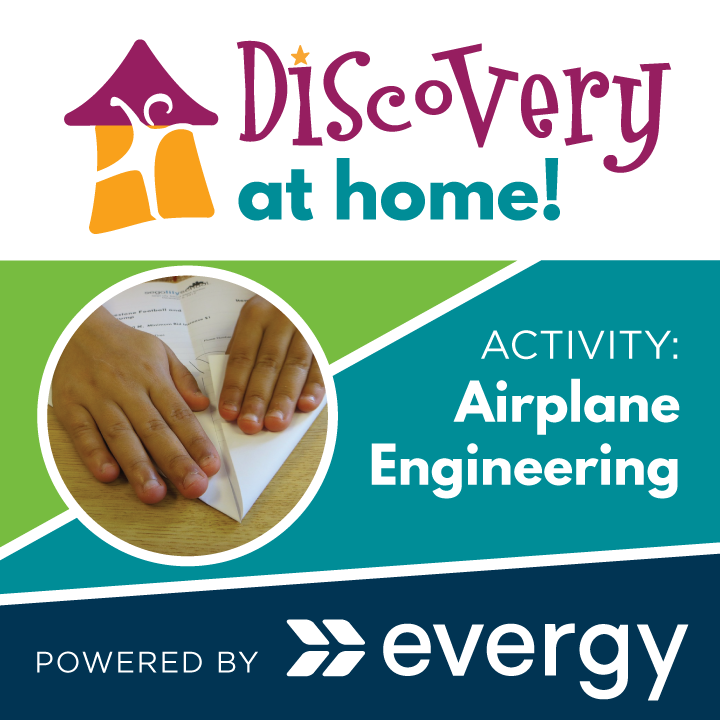Supplies:
- Paper (computer, recycled, lined, etc)
- Cardboard/poster board/recycled materials.
- Tape.
Directions:
- Create a target for the paper airplane to fly through.
- Cut a hole large enough for a paper airplane to fly through in a piece of cardboard or poster board.
- Tape or set up your target to a chair, wall, or somewhere safe for the paper airplane to fly.
- Create a paper airplane. Follow along with our video tutorial or create your own!
- Test the airplane by flying it through the target. If the plane does not fly well, adjust your plane and try again until it flies as well as you want it to.
Ways to expand it:
- Create a table of your testing! You could use chalk on the ground outside to record!
- Create multiple targets for the plane to fly through during one flight!
- Move your starting point back further away from the target.
What kids learn:
- Basic engineering skills. Engineers solve problems with constraints, in this case, limited materials and air pressure. Learn to solve problems by using the engineering design process: asking questions, coming up with solutions, building, testing and improving.
- Aerospace engineering. A field in engineering that focuses on how different aircraft are made.
- Aerodynamics. Learn through experimentation which shapes work best during flight as well as how the material of the structure interacts with air.
- Fine motor skills. Kids practice using the small muscles in their hands later used for writing.
- Experimentation! When kids experiment, they're learning how to learn. Failure is an important part of experimenting, so let kids try things that won’t work. It’s how they figure things out!
Vocabulary:
- Aerodynamics: The part of physics that deals with how different objects interact with air. It also looks at an object’s shape and how air flows around it.
- Constraint. A limitation or restriction. Materials, time, and space are common constraints. Real engineers have to work around constraints all the time!
- Air pressure. The weight of air molecules. Air moves from areas of high pressure to areas of low pressure.
- Force. Energy caused by a push, pull, or gravity.
- Push: A action when you move something away from your body or an object.
- Lift: A force that goes against the weight of the plane and raises it. It pushes against the plane.
- Thrust: When something accelerates or is pushed one way, a thrust force is created in the opposite direction. It is a type of push force.

